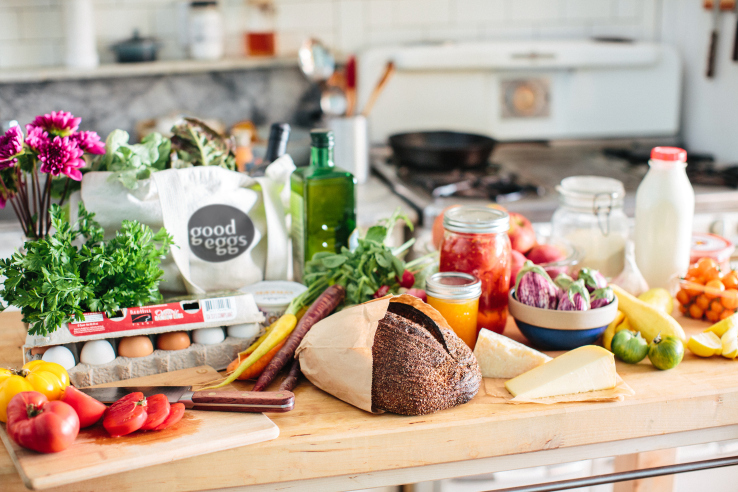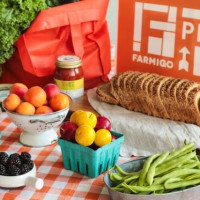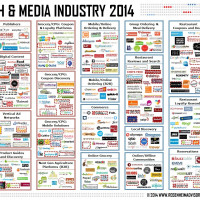The food tech community got a chilling reminder last week: tackling big food system challenges, especially when it comes to distribution, is really, really complicated. It takes a lot more than good code, talented engineers and passionate customers to scale food tech startups that deal with getting perishable food from local farms to people’s doorsteps.
Last Tuesday, organic online grocery service Good Eggs abruptly announced in a blog post that it was closing its operations in all cities except for San Francisco, including Brooklyn, Los Angeles and New Orleans, effective immediately. The company laid off close to 140 employees.
Good Eggs has always been a food tech darling, which is one reason why the news came as such a shock. Within 18 months of launching its marketplace in 2013, Good Eggs had raised $52.5 million and expanded from San Francisco to Brooklyn, Los Angeles and New Orleans. Armed with a lot of capital, it quickly launched in these cities to test the viability of its model in very different markets. In the end, however, this move ultimately hurt the company, the producers using its platform and its customers.
I reached out to co-founders Rob Spiro and Alon Salant for an interview, but, unfortunately, they were not available for comment. None the less, there are many lessons to learn from Good Eggs massive downsizing. The following are some of my initial takeaways, which I hope will be helpful for other startups and investors.
1. Figure Out Your Model Before Scaling
The most important lesson, perhaps, is the importance of figuring out your model and ensuring that it’s scaleable before you scale. As Spiro explains in his blog post:
“The single biggest mistake we made was growing too quickly, to multiple cities, before fully figuring out the challenges of building an entirely new food supply chain. We were motivated by enthusiasm for our mission and eagerness to bring Good Eggs to more people. But the best of intentions were not enough to overcome the complexity. Today we realize that in order to continue innovating in San Francisco, our original market, in order to continue figuring out all the complexity that is required to achieve our mission, we cannot productively maintain operations in other cities.”
Though it doesn’t share numbers, Good Eggs seemed to have great traction in the beginning. It was regularly featured in the press, and it built a groundswell of support and enthusiasm in each market it entered. Figuring out your model, however, means more than finding product market fit. Sure, as a two-sided marketplace, you have to make sure you’ve built a service both producers and consumers want to use. But in some cases these are just vanity metrics. You also have to ensure that your model is fundamentally scaleable, that you have the right team in place to scale it and, most importantly, that you’ve figured out how to make the economics work as you scale.
If you haven’t yet reached scale in your first city, no matter how much money you’ve raised, it’s probably not time to launch in more cities.
2. Scaling Food Distribution Is Really, Really Hard
At the end of the day, Good Eggs is a food logistics company. It manages hundreds of fresh, perishable goods from food artisans and farmers, which it packages and delivers to peoples’ homes. While technology enables it to accept customer orders, streamline fulfillment and optimize delivery routing, technology is not a silver bullet. It is highly cost intensive to build fulfillment centers, establish and manage a network of suppliers and maintain inventory. And every city is very different.
Here’s what Spiro told me Good Eggs would be doing to address these challenges in a 2013 interview:
“We’re scalable because we’ve cut out the usual things that drive costs up. One of the reasons that’s possible is because we’re using lots of custom software throughout the process. Producers know exactly how much to harvest and make, which reduces waste. We’re not warehousing anything, all the food that shows up in our Foodhub is pre-sold, and goes out to shoppers that same day – that reduces overhead and makes for a really streamlined process.”
Two years later, it’s clear that software and reduced inventory were not enough to make the model scaleable. Is this something that could have been learned from one city?
There is a reason it took Amazon and Fresh Direct so long to expand to new cities: “The Last Mile Challenge,” the cost of getting goods from a distribution center to a customer’s home. To address this challenge, Good Eggs originally focused on central pickup locations and managing its own fleet of trucks to deliver groceries to people’s homes for a premium. It has since dropped the pickup locations.
Some organic online grocers like Farmigo, which also serves the Bay Area and Brooklyn, rely solely on pickup to address the last mile issue. “I believe our business model of having an organizer in a neighborhood serve as a community pickup location is an extraordinary advantage in the category,” Farmigo founder and CEO Benzi Ronen tells me. “Our model allows us to avoid the massive costs associated with home delivery and can scale across regions in a way that is affordable for the consumer and economical from a business perspective.”
Others like Door to Door Organics do offer home delivery, but it manages the last mile by increasing the basket size of its shoppers. Subscribers sign up for a CSA-like vegetable and produce box subscription, and then are able to add groceries on top of their order. It seems like Good Eggs is also experimenting with bundles now.
3. It’s Infinitely Easier to Iterate Software Than Supply Chains
I don’t envy startups that are trying to innovate supply chains, especially perishable supply chains. Unlike engineers, who can get an app up in a day and start testing and iterating in real-time, food startups have a lot more infrastructure and people involved, which makes it more difficult to iterate.
Rob explains in his blog post:
“When building a software business, hard lessons are learned in code and quickly corrected; when building a food and logistics business, hard lessons involve people, and partners, and are very hard to correct.”
At the end of the day, online grocery is still very much the wild west. We’ll be looking into Good Eggs and other companies in this space over the coming weeks to dig deeper into what’s working and what’s not, so stay tuned.
Want more resources like this? Please consider contributing as little as $9, so we can keep bringing you the insights you depend on.





![Quinciple Leverages Tech, Delivers Farmers Market to Your Door [Video]](https://foodtechconnect.com/wp-content/uploads/2014/01/Screen-shot-2014-01-21-at-11.00.28-AM-200x200.png)

